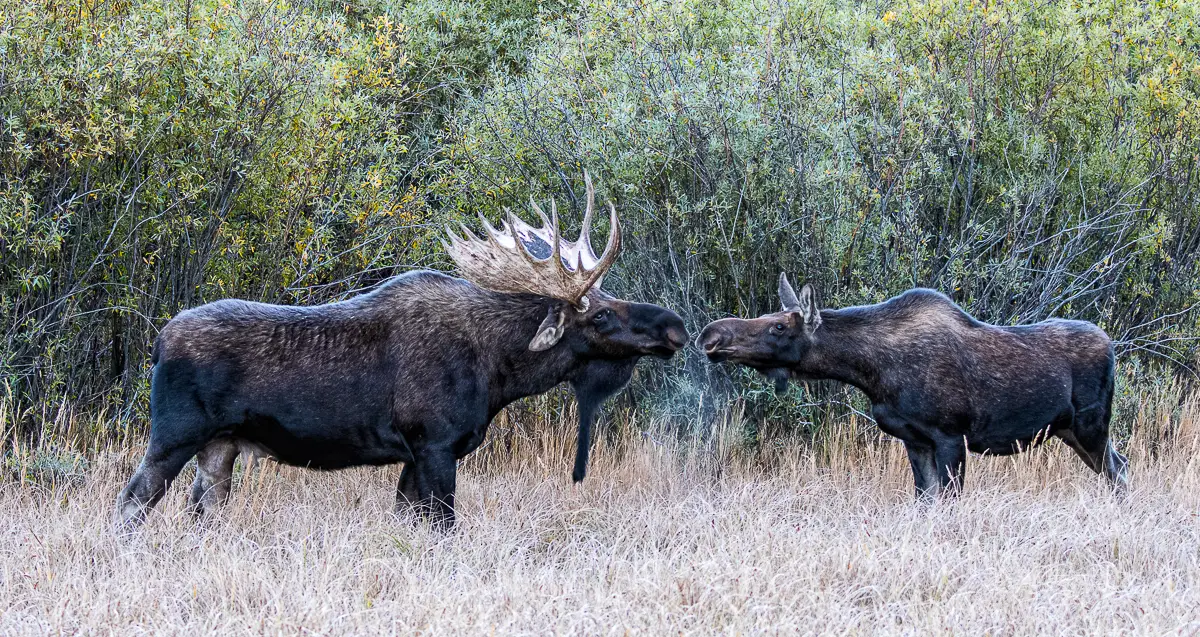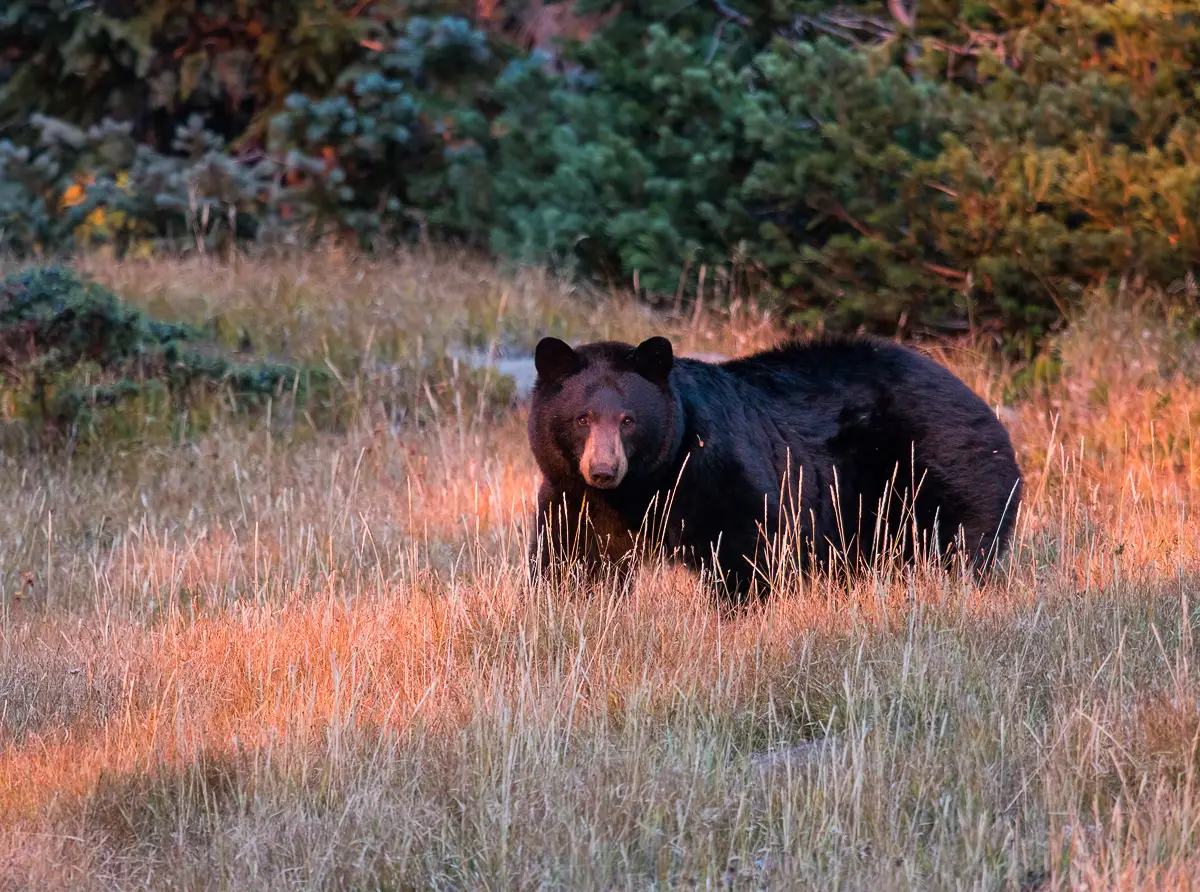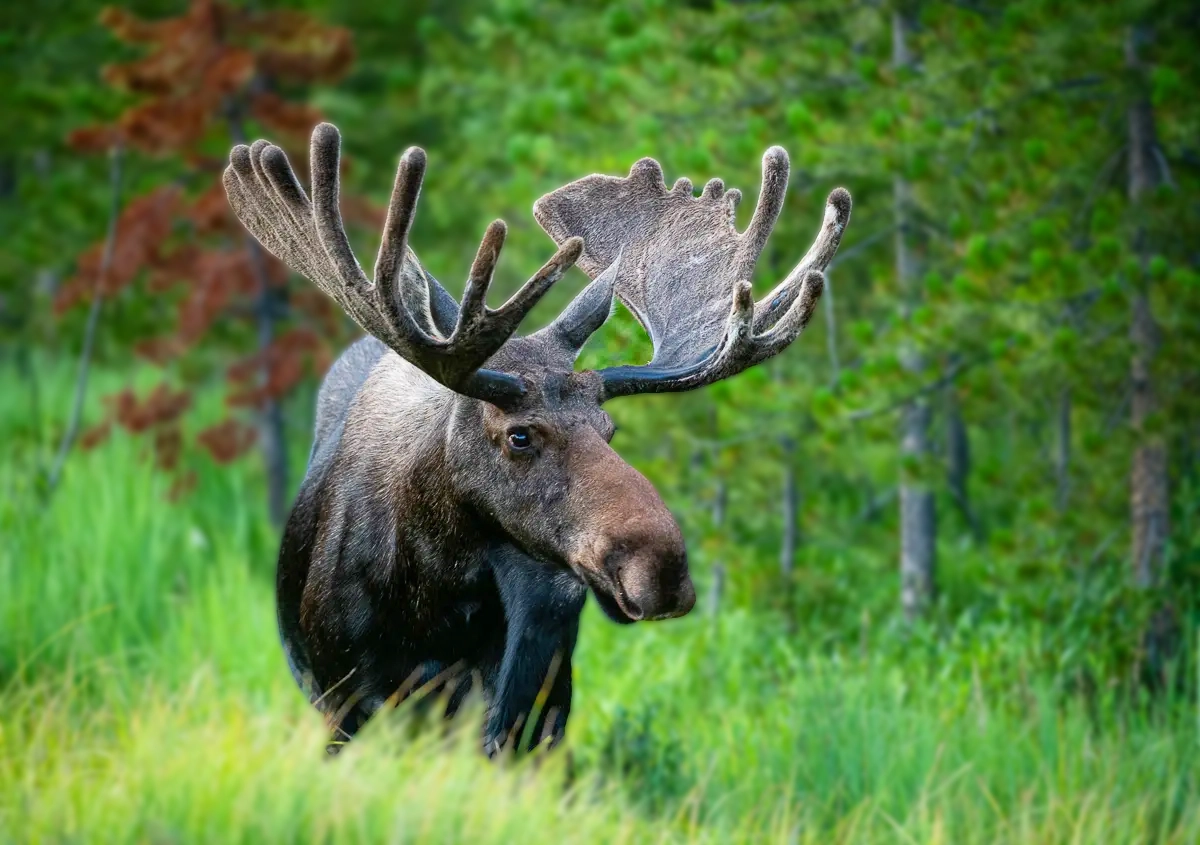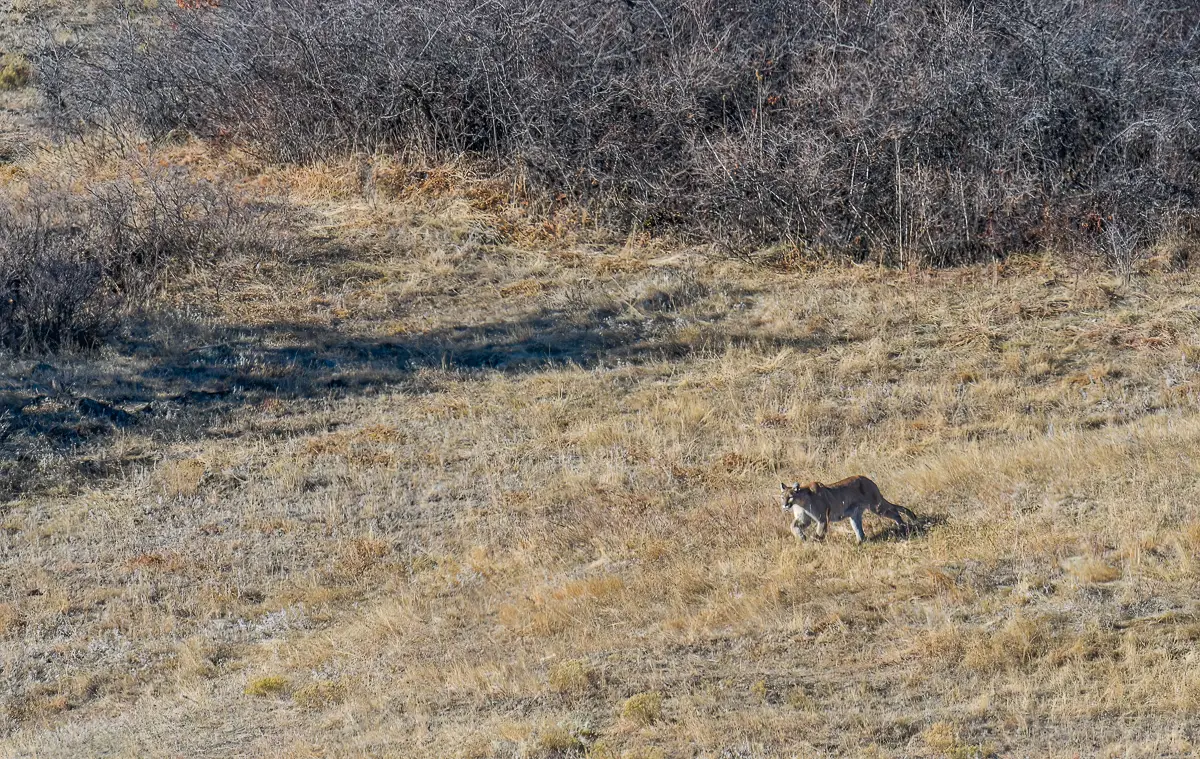
Rocky Mountain National Park Wildlife Tours
Animals in Rocky Mountain National Park
Wildlife Chances on a Wildlife Tour
Spotting Moose, Elk, Bighorn Sheep, and Bears in Rocky Mountain National Park are common guest goals on our Estes Park Wildlife Tours. One of the most common questions I get regarding wildlife is "What can we expect to see on a Wildlife Tour?" Well, after two decades of guiding I have been able to compile some real statistics of what we see on wildlife based tours. If your tour is not a wildlife tour then your chances of seeing these animals is greatly reduced.
Estes Park Wildlife Tours Offered
Experience Rocky Mountain National Park Wildlife on a Private Guided Estes Park Wildlife Tour. World class Swarovski Binoculars provided for each guest, spottings scopes for distant views, and windows that go all the way down for extremely close encounters. Tours led by an expert guide with 20 years of experience showing and teaching you the wonders of Colorado's Rocky Mountain animals.
Bears in Rocky Mountain National Park
Many people expect all National Parks to be good places to see black bears, but bears in Rocky Mountain National Park are extremely rare sightings due to low berry options, lack of hard mast acorn producing oaks, high elevation and colder temperatures, and low carcass availibility due to lack of healthy apex predator populations like Grizzly and Wolves. Prior research shows only 20-30 adult black bears residing in Rocky Mountain National Park. Colorado's total Black Bear population is estimated by Colorado Parks and Wildlife (CPW) to be between 17,000 to 20,000 bears. Rocky's Black Bears enter hibernation in November and awaken from hibernation in April. Colorado currently is home to only American Black Bears. Grizzly Bears were found in Colorado historically before they were extirpated. The last confirmed Grizzly Bear in southern Colorado was 1979, while the last Grizzly Bear in Rocky Mountain National Park was killed in 1921.
You do not need Bear Spray in Rocky Mountain National Park while hiking, nor bear bells. We do see Black Bears only a few times in May, and again in August and September when the Choke cherries ripen, usually at great distances in binoculars and spotting scopes. In 20 years of hiking in Rocky I have never seen a Black Bear on any of the trails. It is likely that more black bears live in the town of Estes Park than in the whole of Rocky Mountain National Park. I always like to joke that expecting to see a black bear in Rocky on any random day is like going to a Sushi resturant wanting to order a steak, it's just not the best place. Now if Elk, Moose, Bighorn Sheep, Yellow-bellied Marmots, or Pika get you excited then Rocky is one of thee best places to see them.

Moose in Rocky Mountain National Park
Moose are found in Rocky Mountain National Park after being reintroduced to the region in 1978. The best time to see moose in Rocky Mountain National Park is May and June for close sightings. During July, August, and early September most moose sightings are at greater distance needing binoculars and spottings scopes, with roughly once a week roadside encounters under 100 yards. We usually can find a moose or a few on September tours if we target them instead of Elk, but moose and elk are most active at the same time of the day and often in different regions of the national park.
Moose sightings have dramatically increased over the last decade and on most Wildlife Tours from late April through August we often find 5 to 15 moose on each 4 hour tour in Rocky Mountain National Park. Our record for sightings is 26 moose on two seperate early June tours. Yellow Wood Guiding can show you the best places to see moose in Rocky Mountain National Park on one our Estes Park Wildlife Tours.
A Moose population study is underway in Rocky and management decisions will be made that will likely mean a lower population in the park in the coming years. But currently each year has been the best year to see moose, especially after the 2020 fires. The population estimate is roughly 250 moose in the national park in the summer months.

Wildlife Sighting Changes over the years
Some changes over the last decade worth sharing are Moose sightings have increased especially on the eastern side of the park with chances still low but possible in the Spring where before that was extremely rare. Sheep sightings have gone up in the winter, down a bit in the spring and reducing in mid to late summer. The Elk population has fallen by about 40% due to many factors, but are also migrating further east in the winter re-igniting traditional migration routes to and from the great plains. In the winter of 2022 - 2023 only 33 elk, mostly bulls, were documented inside Rocky, with another roughly 200 mostly cows in the Estes Valley. Most of the region's elk now migrate to areas west of Loveland, Berthoud, and Lyons to overwinter. The elk return to the Estes Valley between April and May, before migrating into the national park for the summer months returning to town in mid September through October. Coyote sightings have declined from 38% to only 12% of tours likely due to the impact of the Wyoming Ground Squirrel population collapse in part due the 2013 floods, and fewer wintering elk to feed on due to winter die off. Beavers are starting to make a slow comeback due to the Elk Management Program fences started in 2008 and fewer overwintering elk.
*Currently Rocky Mountain National Park does not have Wolves or Grizzly Bears, both last seen in 1921, or Bison which were last seen in 1863. In the past they all called Rocky Mountain National Park home. Colorado voted to reintroduce Wolves and they have returned to Colorado lands, but far from Rocky and slowly growing in numbers. Hopefully they will return to Rocky Mountain National Park to help balance our ecosystem the way nature intended in the near future.
Wildlife Sighting Chances on Rocky Mountain National Park Tour
The overall chances are year round. The Notes detail special times of year that your chances of a sighting increases dramatically, or the range of times the animals are seen due to season or hibernation. Population listed are estimated numbers in the park.
Species |
Population |
Chances |
Notes |
| Elk | 1000 Summer |
99% |
Winter Pop in the park 20-33 bulls, Estes Park Winter 185 |
| Bighorn Sheep | 100-200 |
63% |
84% Jan - mid July, very low later summer 25% Mid July - Early Oct, 68% during the Sheep Rut Mid Oct - Dec |
| Mule Deer | 300-450 |
99% |
More close sightings from Oct - May |
| Coyote | 125 |
12% |
12% Winter Oct - April, Summer has a few more sightings 16% June - August |
| Moose | 250-300 |
95%* |
*Only during June - early Sept., Winter Nov - Jan 1%, Feb 23%, March 37%, after April 15th 72%, May 89%, Sept 11-30th 33%, Oct 6% |
| Black Bear | 20-30 |
3% |
See less than 10 bears a year, usually only late April to May and late August to early September |
| Yellow-bellied Marmot | Very Common | 90% |
Mid April - Early Sept. |
| American Pika | Very Common | 90% |
May - Sept. Only |
| Beaver | 60-100 |
3% |
Only Evenings Late April - early June Only if we plan a trip for them instead of moose, always only with binoculars |
| Muskrat | 200-300 |
80% |
Only Evenings Late April - Early October Only if we plan a trip for them instead of moose, often close |
| Colorado Chipmunk | Very Common | 95% |
Mid April - October |
| Pine Squirrel (Fremonts) | Very Common | 70% |
Generally only found while hiking |
| Abert's Squirrel | 200 |
1% |
Becoming very rare |
| Long-tailed Weasel | 300-500 |
3% |
May - Sept. |
| Badger | 20-100 |
.5% |
April - Sept. |
| Bobcat | 125 |
1% |
See 1-4 a year usually winter |
| Mountain Lion | 24 |
.056% |
Saw 3 over 5335 tours! |
| Snowshoe Hare | Common | 14% |
*Winter Snowshoeing Only |
| Great Horned Owl | 200 |
70%* |
*ONLY Late March - early June if we have public nest. No good nests 2024 and 2025. |
| Wild Turkey | 400 |
80% |
More Common during Late Fall - Late Spring |
| Golden Eagle | 4-12 |
2% |
Winter increases to 3% |
| Bald Eagle | 2-6 |
5% |
Winter increases to 9% |
| Osprey | 4-15 |
75% |
If we target near Lake Estes April - Sept. Nesting par at Lake Estes 2021 - 2025. |
There is a large variety of other small mammals not mentioned here like Golden Mantled Ground Squirrels, Mountain Cottontails, Wyoming Ground Squirrels, Colorado Chipmunk and various great birds that we see on a regular basis. We see them nearly every single day they are active.
There are a number of other species that do occur in Rocky Mountain National Park that we rarely see. Generally we only see these species a few times a year because they are nocturnal or avoid human activity. They include Pine Martins, Red Foxes, Pocket Gophers, various Bats, and Raccoons. If you are on a tour where you are lucky enough to see one of these animals then you have had a truly unique experience very few guests get to see.

Extremely Rare Colorado Mountain Lion sighting in the daylight
Yellow Wood Guiding is Authorized by the National Park Service, Department of Interior to conduct services in Rocky Mountain National Park. Fees for service are strictly for educational nature experiences and photography instruction, not transportation.